Video
youtube
Our MOOC Digital Culture/ Clutter - Life and Death on the Net
starts on October 2017 and will be featured on edX.
Check out the trailer by Amitay Gilad, Koby Levy and The League
more details soon
1 note
·
View note
Photo
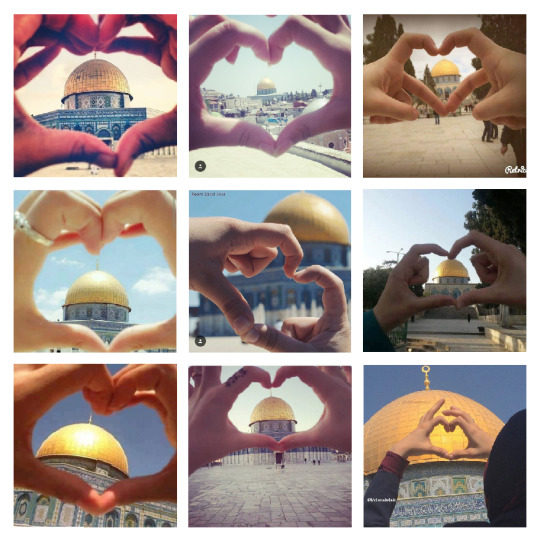


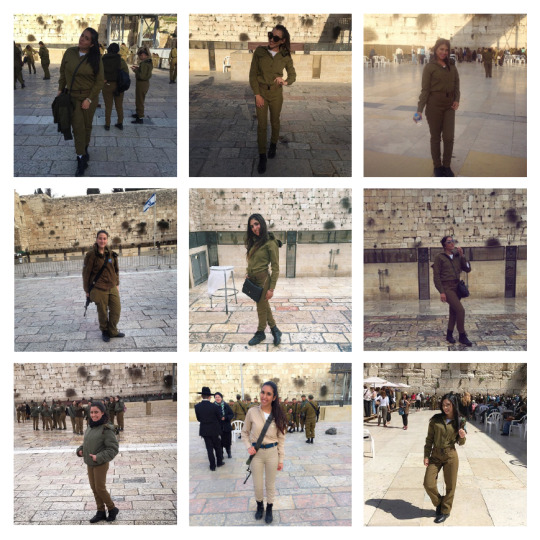
OMG (oh my god!) is an Instagram based data-vis project by @ronilevit and myself featuring thousand of images uploaded from the holy sites in Jerusalem (the western wall, Al Aqsa Mosque and Church of the Holy Sepulchre). OMG is part of the main exhibition of Jerusalem Design week, starting this Thursday, May 19th at @hansen_house.
for more details see website -
http://jdw.co.il/%D7%AA%D7%A2%D7%A8%D7%95%D7%9B%D7%94-%D7%A8%D7%90%D7%A9%D7%95%D7%A0%D7%94/
6 notes
·
View notes
Text
The Museum as Network - keynote at “the visitor experience at the museum in the digital age” symposium
link to the ppt on slideshare - https://www.slideshare.net/mobile/rominska/the-museum-as-network
link to the playlist on youtube - https://www.youtube.com/playlist?list=PLlM0ESI_brIWnOO2XlTf3dWEh7wEAqbtc
2 notes
·
View notes
Photo
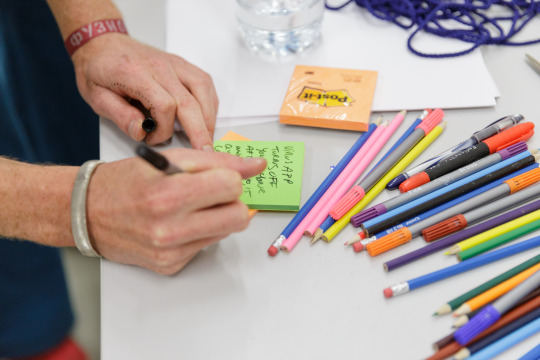
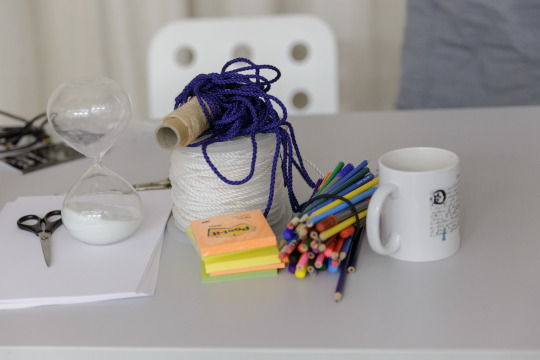
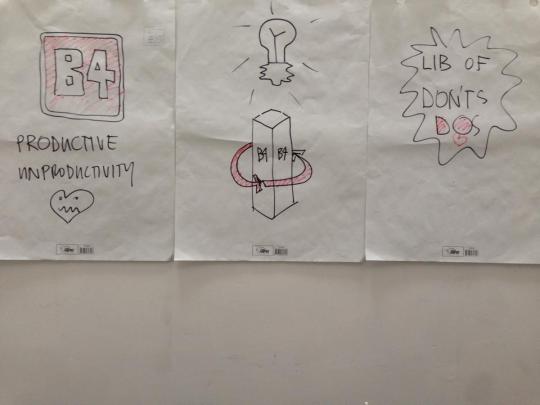





Inventing the Anti-Productivity App Workshop NidaArtColony 5th Inter-format Symposium on time (and inter-formativity)
22–25 August 2015, Nida, Lithuania
0 notes
Link
"Beyond the Object - Photography as Simulation"
by Romi Mikulinsky and Yanai Toister
1 note
·
View note
Video
youtube
“Is Online Reading Becoming Synesthestic?”
Synesthesia in the Humanities, Arts and Neuro (Sciences)
Art Laboratory Berlin, 2013
2 notes
·
View notes
Text
The Social Media Playbook for Artists (who want to stay sane)
Artist Career Development Program (ACDP)
Artport, Asylum Arts and Artis
Tel Aviv April 2014.
http://prezi.com/ackwc5hsplhx
0 notes
Link
In an age of connectability, when streams of images are intertwined with an overflow of textual data, we find ourselves touching screens more and more often. Ne
#reading#e-reader#e-reading#screen#book#touch#senses#vision#apps#touch-screen#data#synesthesia#online#art#Kinect#blind
1 note
·
View note
Text
“And yet, what existence, really, does it have, the past”?[1] On Roi Kuper’s “Vanishing Zones” / Romi Mikulinsky
I. Sabotage
* I dissolved the emulsion. I got papers and took them apart. It’s something you shouldn’t do. It made the papers’ fibers appear. It exposes a layer that exists in the process, but is never overt.
* I crunched up the papers to look as if they had been thrown into the trash. I spread them out and made a contact print out of them, a new picture.
* I used disposable cameras or toy cameras; small capsules of inferior quality.
* I had strewn negatives in forgotten, abandoned places. I buried some in the ground and then went looking for them. Many went missing.
* I washed them using soap and water and once again made a print out of them, if they survived.
* I put papers in the oven. Many were cracked, ruined.
(Conversation with Roi Kuper, August 2012)
Some twenty years after it was sealed, the series “Vanishing Zones” is revisited by Roi Kuper who assembled it into a book. What is the meaning of revisiting these works after such a long time? Are they now stable enough to be fixed permanently in book form? Or is a return to the series yet another stage in the mutilation of the works?
“Vanishing Zones” intensifies the double bind between the presence and disappearance of objects from both reality and memory through a chain of actions whose purpose was to sabotage matter. Kuper illustrates some of the processes in which memories take shape, proposing a photographic analogy to the distance between the way matterappears to us and the way it is stamped upon and processed by memory. Such an examination is simultaneously ontological and epistemological: How do we remember? What do we remember? In what ways are experiences, people, and objects reserved within memory?
Time is a predator. It “bites” memory, sharpening its teeth, emphasizing some objects while others are devoured and made to vanish. Memory, too, is untrustworthy; it seems, indeed, to be an infinite storage space, but its contents continuously change, as if autonomously. During the long process of working on “Vanishing Zones” and upon returning to it, more than 20 years since he began haunting the interrelations between memory and matter, Kuper continues settling an account with memory and one of its most famous aides, photography. “Vanishing Zones” calls attention to that which is abandoned and then disappears by directing our gaze to what moves away from us.
“We are continually looking back, lingering, agonizing to grapple with memories, to reinvent, rotate them as if they are chosen stones drawn from the depth of biography and placed on a shelf like a collection of prickly objects, objects invented by consciousness.” Bejerano’s words are echoed in Kuper’s works: objects drawn from the depth of biography become comparable to negatives dug out of the land; both were deposited in the hands of time and memory, and are now presented as part of a collection. Be it a collection of photographs, or a collection of prickly objects, this collection is never complete, finite or stable, a collection that also continually changes.
Why would one sabotage memory, already at the moment it is being created? How does the way in which we initially experience and perceive objects, situations and people affect the way we remember them? Can we settle the breach between the appearance of images in the field of vision, their immediate disappearance, and the way they are stored in memory? In John Banville’s The Sea, a novel preoccupied with memory and the (im)possibility of stabilizing it, the narrator, Max Morden, beholds figment, memory, and dream as almost equal to one another. Upon envisioning his daughter, Morden admits he fails to see her: “She wavers before my memory's eye at a fixed distance, always just beyond focus, moving backward at exactly the same rate as I am moving forward.” Despite the past’s evasiveness and the way people and objects appear differently in the mind’s eye and in memory’s eye, there exists a chain that links the living and the dead. This chain connects past and present, and creates continuity between here and now, yesterday and tomorrow: “Thus in the minds of the many does the one ramify and disperse. We carry the dead with us only until we die too, and then it is we who are borne along for a little while, and then our bearers in their turn drop, and so on into the unimaginable generations.” This memory chain is similar to a relay race in which runners pass a torch from hand to hand. Here, however, it is processed, dim memories, prickly objects, that are passed from bearer to bearer until they fade away.
Memory is elastic, imprecise, and mutable. The act of remembrance does not necessarily testify that something really took place, but rather, as Bejerano puts it, it is a pulling out from the depths of biography. Does sabotaging memory and matter, and highlighting the breach between them by presenting them as flawed, or incomplete, change the way we remember? Is the prickliness of objects predetermined or does it attach itself to them only when they are deposited into the mnemonic storage space? How prickly were the objects prior to being placed on a shelf in the collection stored within memory?
The first works in the “Vanishing Zones” series did not survive. Kuper washed them: “the first series of the works was annihilated. They came out with a certain hue, pieces of colored paper, colored in blue, green. The hue ruined the works. I did not document it. I was in the middle of things. The works demonstrate that things pass through me […] The fact that you ‘remember’ does not mean that this is what happened.”
What is the meaning of an artistic decision to ruin and simultaneously restore? Can artists perform such double roles? Is it possible to stop time and simultaneously assist it to devour everything deposited in its hands? Kuper revolts against the traditional role of photography by developing, with an almost sadistic pleasure, creative ways to deconstruct the photographic image. If photography proposes itself at the same time as both an investigation (of reality) and the object of investigation, Kuper examines the sustainability of memory-aids, of preservation methods, by deliberately sabotaging them. If the means by which we maintain and preserve memories is exposed to such dangers, what happens to the objects that retreat from us in the moment of their appearance and then disappear within the depths of consciousness?
Kuper’s reverse gaze is also directed forward, to what will be missing in the future, to what is already missing at the moment it is photographed. Drawing again on Bejerano, Kuper’s gaze not only prolongs, but “unravels, tears, and reassembles.” The actions he initiated for and against the images captured in “Vanishing Zones” are also like that; they unravel, tear, and reassemble at the same time they dilute, deconstruct, and destabilize the rapport between what is kept and what is ruined, between what we see and what we remember.

II. Vanishing
“Why sabotage memory in the first place? It is already unstable.”
(Conversation with Roi Kuper, August 2012)
Two types of images are included in “Vanishing Zones”: images that are almost banal, arbitrary, or were randomly photographed, and survived Kuper’s series of actions, and those in which friends, objects, landscapes and experiences appear (and the possibility of their disappearance was taken into consideration by the artist). “Most of the photographs were not planned, I didn’t go looking for them, they happened by chance.” Kuper arbitrarily chose the topics or objects he photographed. He often shot things he knew he could not remember – unimportant, arbitrary, random objects. Nevertheless, during a conversation that took place at a later date, Kuper admits choosing the objects because they touched him in some way. Unlike other photographers, or more traditional concepts of photography, Kuper does not reproduce what he sees in reality, but rather what will be missing from it.
In the works included in “Vanishing Zones” hues are almost imperceptible. Some of the hues were erased, other blocked as if gone missing. The world revealed through “Vanishing Zones” lacks contours; it is a world whose features are almost indistinct, where there is no certainty whether the horizon signifies sea or land. The works included in the series, therefore, underscore disintegration and disappearance. They deliberately protest against the actions of time and memory on the images that appear in the field of vision by paradoxically mimicking their actions. Vanishing therefore becomes a mental state, just as much as it is a physical one. In order to draw the viewers’ attention to the constant threats posed to memory and to its’ fragility, Kuper accelerates the decay of the photographic paper, and distorts the images so that the photo’s texture takes their place. The fibers of the paper appear through its wrinkles, the layers of the photograph peel off creating new marks in the landscape and additional contours around the people and objects that are photographed. For example, in some of the works, a large watercraft appears, probably a ship, but one cannot be sure. Like a large stain disrupting the field of vision, it is placed at the center of the frame. The sea surrounding it is also blurry, indistinct, and it is impossible to note waves and ripples, boats, or any other detail hinting that the vessel is a ship, or that it is at sea. How, then, can one determine that it is a ship if its features are blurry and it is uncertain that this vehicle is in water? The mast alone serves as a visual anchor, hinting that this is a boat. Other works in the series pose the same problem: it is almost impossible to tell what or who is photographed. The subject or object of the photographs becomes secondary to the marks left by the manipulation of the photo.
The various acts aimed at sabotaging the photographs highlight the correlation between the works and their subjects; we know that the people who appear in the works are no longer who they were at the time they were photographed, the landscapes have changed, the objects have become worn out. We acknowledge that the image depicting the object is forever partial and so is the way it is perceived and captured in memory. Like their subjects, the photographs go through a process of decay and disintegration. “All forms and colors were dissolved… there were no contrasts, no shading anymore… a single blur from which only the most fleeting of vision emerged, and strangely – I remember this well – it was the vey evanescence of those visions that gave me, at the same time, something akin to a sense of eternity.”
Fleeting memories haunt the protagonist of W. G. Sebald’s Austerlitz, who follows his trail back to the world he left behind. According to Austerlitz, paradoxically, it is precisely the evanescence of these images, the inaccessibility of memories, the prickliness of the objects stored in memory that may yield a sense of eternity. Contemplating about our relationship with time, Austerlitz wonders “in what ways do objects immersed in time differ from those left untouched by it?” For Kuper, it seems, there is no escape from time. All objects are immersed in time and are incorporated into memory - sabotaging memories and the memory-aids, accelerates the dissolution, of both material and matter; perhaps this is the incentive for creating images so fragile, so incomplete that they never cease to disintegrate. So why return to these works some twenty years after creating them? Why assemble and preserve them in a book? Is doing so in accord with the nature of the works? Or does it contradict their inner logic? Do the works continue to fall apartand is there any point in attempting to protect them from time by trying to stabilize them?
In “Vanishing Zones” Kuper comprehensively examines the damages ravaged by time by ravaging his own photographs. The series is not comprised merely of photographs that desperately attempt to capture reality at the moment it turns into a memory, but rather is an experiment that addresses the nature of photography itself, photography in which it is impossible to tell sea and land apart, where forms and colors were dissolved while being placed on a shelf in “the collection of prickly objects,” in which shapes take over the image, and all is left for the viewers is to stare at a “blur from which only the most fleeting of visions emerges”.
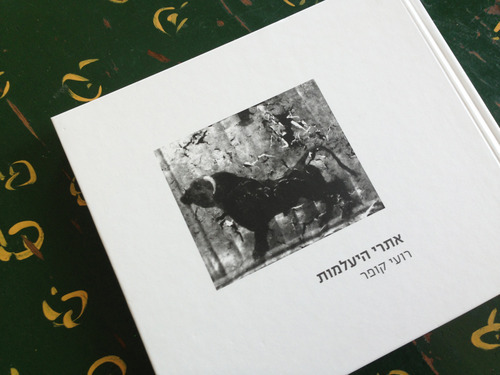
John Banville. The Sea. 1st American ed. New York: Knopf, 2005.
Maya Bejerano. “Her Last Birthday” in Gag no. 9 (2004):77 [Hebrew],
Banville, 104.
Banville, 90.
Bejerano, 77.
Winfried Georg Sebald. Austerlitz. New York: Random House, 2001,. 95
Sebald, 100.
#roi kuper#memory#photography#Banville#john banville#W. G. Sebald#sabotage#vanishing#vanshing zones#sebald
0 notes
Text
Jigsaw Puzzles
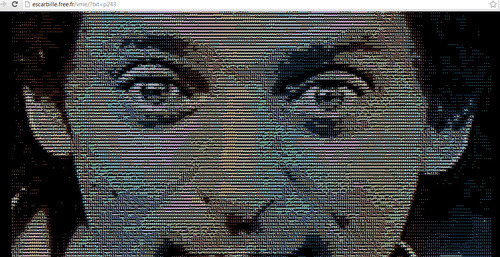
Let us imagine a man whose wealth is equalled only by his indifference to what wealth generally brings, a man of exceptional arrogance who wishes to fix, to describe, and to exhaust not the whole world - merely to state such an ambition is enough to invalidate it - but a constituted fragment of the world: in the face of the inextricable incoherence of things, he will set out to execute a (necessarily limited) programme right the way through, in all its irreducible, intact entirety.
Chapter XXVI Bartlebooth, I
Life A User's Manual
0 notes
Text
Reading and Writing in the Digital Age
A lecture given at the "Book Live" Symposium that took place in London, 2013. The Book live! is a collaboration between the Centre for Media and Cultural Research (CMCR) at LSBU and bookRoom Research Cluster at UCA Farnham.
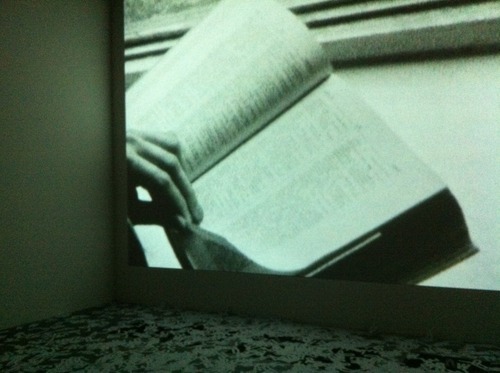
Ewa Partum Active Poetry (1971)
In our age of connectability and interconnectivenss, streams of images are intertwined with an overflow of textual data; The ever-changing contexts and multiple platforms construct world of readable images and legible texts.[1] Words, codes, or metadata, which can be read by humans or machines, have all become potentially interconnected. Moreover, the constant framing and reframing of images and words brought to the creation of endless narratives a certain destabilization of meanings as every movement or manipulation of images or texts is registered into an infinite archive. The role of images online and in digital publishing has become a key aspect in the contemporary experience of reading; the hyper-connectivity of the digital age accelerated the convergence between words and images. Images are woven into a textual setting being always surrounded by additional information, links and exhortations. As a result new ways of interacting with images and texts have developed. The speed and immediacy that defines the interaction with images and texts today, the facility with which they are produced, distributed and circulated conjure up new sets of relations between the images and text.
The Present and Future of Reading "The Book Live Conference" London South Bank University, June 2012 from Romi Mikulinsky
#writing#W. G. Sebald#bjork#descriptive camera#e-Reading#e-publishing#Kenneth Goldsmith#Matt Richardson#machine reading#metadata#Octave Uzanne#Sergio Chejfec#The End of Books#Uncreative Writing#Vilém Flusser#reading
4 notes
·
View notes
Link
What kind of books does the 21st century invite? and on what platforms shall we read them? how does e-reading change our reading habits? and how do publishing houses monitor their readers' reading habits? and, finally, how will the interaction with literature (and hardware) that reads us provide us with new kinds of literature? Thoughts, stats and speculations about "bound printed nonstreaming artifacts" and those read from screens.
0 notes
Link
Space and Photographic Spaces in Literature and in Virtual and Physical Archives
#space#Photographic Space#Literature#Virtual#Physical Archive#archive#The Bechers#Hans Peter Feldman#Sugimoto#hiroshi sugimoto#atlas#W. G. Sebald#Georges Didi-Huberman#lewis carroll
0 notes
Link
From its first days the photographic medium opened up a new world for technology and art, offering a new way to think (and see) time. In this presentation I will overview the connection between art, technology, entertainment and power starting from Eadward Muybridge's experiments in motion, contemplating about W. G. Sebald's employment of archival material, visiting Ridley Scott's Blade Runner's voice interface, glancing at glitches and artistic reactions to Google's attempts to photograph and map the world. We shall conclude with ZZZ Base archive of digital media and their trial and error methodologies.
#photography#archive#ZZZ Base#Eadward Muybridge#movement#W. G. Sebald#Ridley Scott#Blade Runner#technology#interface#glitch#google earth
0 notes